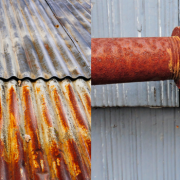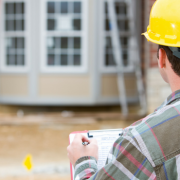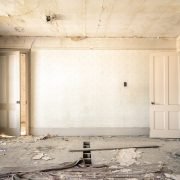6 questions to ask before booking your pre-purchase house inspection
Before signing on the dotted line to secure your new home, you may want to get an expert’s opinion in the shape of a pre-purchase house inspection. The last thing you want to do is end up with an asset that’s going to cost you money in the long run.
There are a number of building inspectors carrying out pre-purchase inspections who you can approach, but you need to make sure that they’re going to give you useful, reliable advice. Ultimately, your decision will probably come down to how much experience each inspector has and how useful the information they provide you with will be.
So what sort of questions should you ask before a pre-purchase house inspection?
What experience do you have?
Before booking a pre-purchase house inspection, you want to make sure that your inspector knows what they’re doing. Find out how long they’ve been inspecting, and what they did prior to inspections that gives them insight into how homes are constructed.
I started out as a builder back in the 80s, and, combined with my time in the NZ Police as a Forensic Crime Scene Examiner, that’s given me the ability to pick up things that others might not. Industry knowledge is vital – and great observation skills are even more important.
What kind of qualifications do you have?
Inspectors should be experienced and qualified – completing New Zealand Building Surveyors Training Programme modules has given me knowledge on key things to look for, including weather tightness, and any inspector worth their salt should have done similar training.
The modules also cover topics such as decay, fungi and moulds, cladding systems, forensic techniques, and the properties of moisture.
What kind of feedback have you received from clients?
Before booking a pre-purchase home inspection, make sure you’ve heard what the inspectors’ other clients have said. Google their name or search for them on Facebook to discover unedited testimonials from clients. One of the nicest parts of the job as an inspector is hearing nice feedback, so most inspectors will share some on their website well.
One of my favourite testimonials, from Marcia Gates, highlights why I became an inspector: “I just wanted to thank you for the comprehensive and professional report you provided us with when we were considering buying a property recently. We were totally unaware of building construction and pitfalls we may have encountered without the professional report we received from you. We also thank you for being so pleasant and honest to deal with.”
What sort of pre-purchase house inspection reports are available?
Whether you’re a purchaser or the vendor, a home inspection report can be pretty helpful. In both situations, a report will highlight the strengths and weaknesses of a property, giving the vendor a clear view of what they might need to fix up before selling, and showing any potential buyers the true condition of the home so they can avoid any nasty surprises!
How quickly can I get my report?
The home buying process is long enough without reports dragging it out even more. Make sure you know upfront when you’re going to get your report so there are no nasty surprises. We turn our reports around in only one working day so that you get as much time as possible to consider what’s covered in the report.
Know your inspector, know your property
Pre-purchase house inspection reports are necessities when you’re considering buying or selling a property. Reports, however, are only as reliable as the inspector you’re working with. Make sure you’re working with one who’s got the experience and know-how to make sure you know what you need to know. Get a quote for a pre-purchase house inspection now















